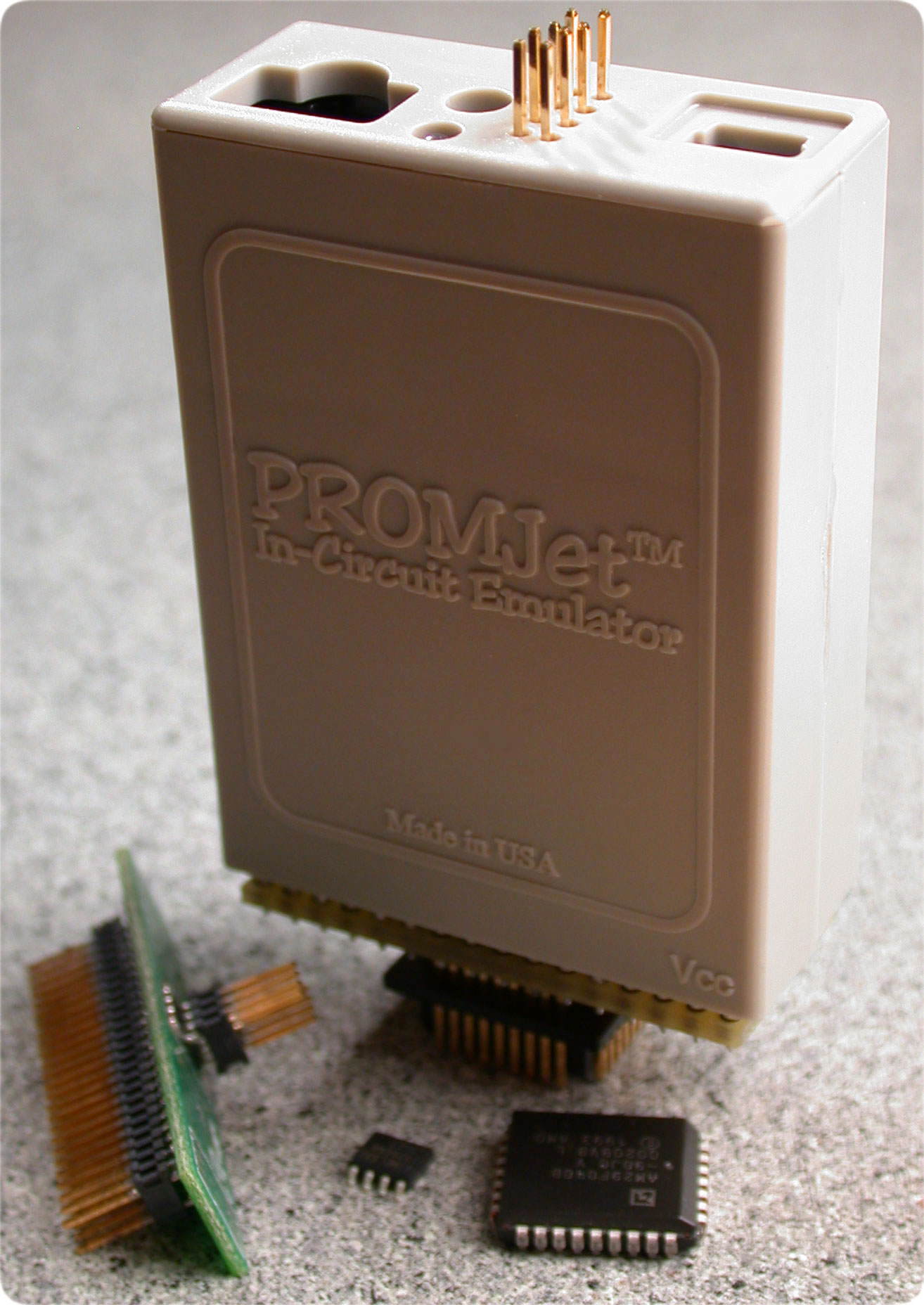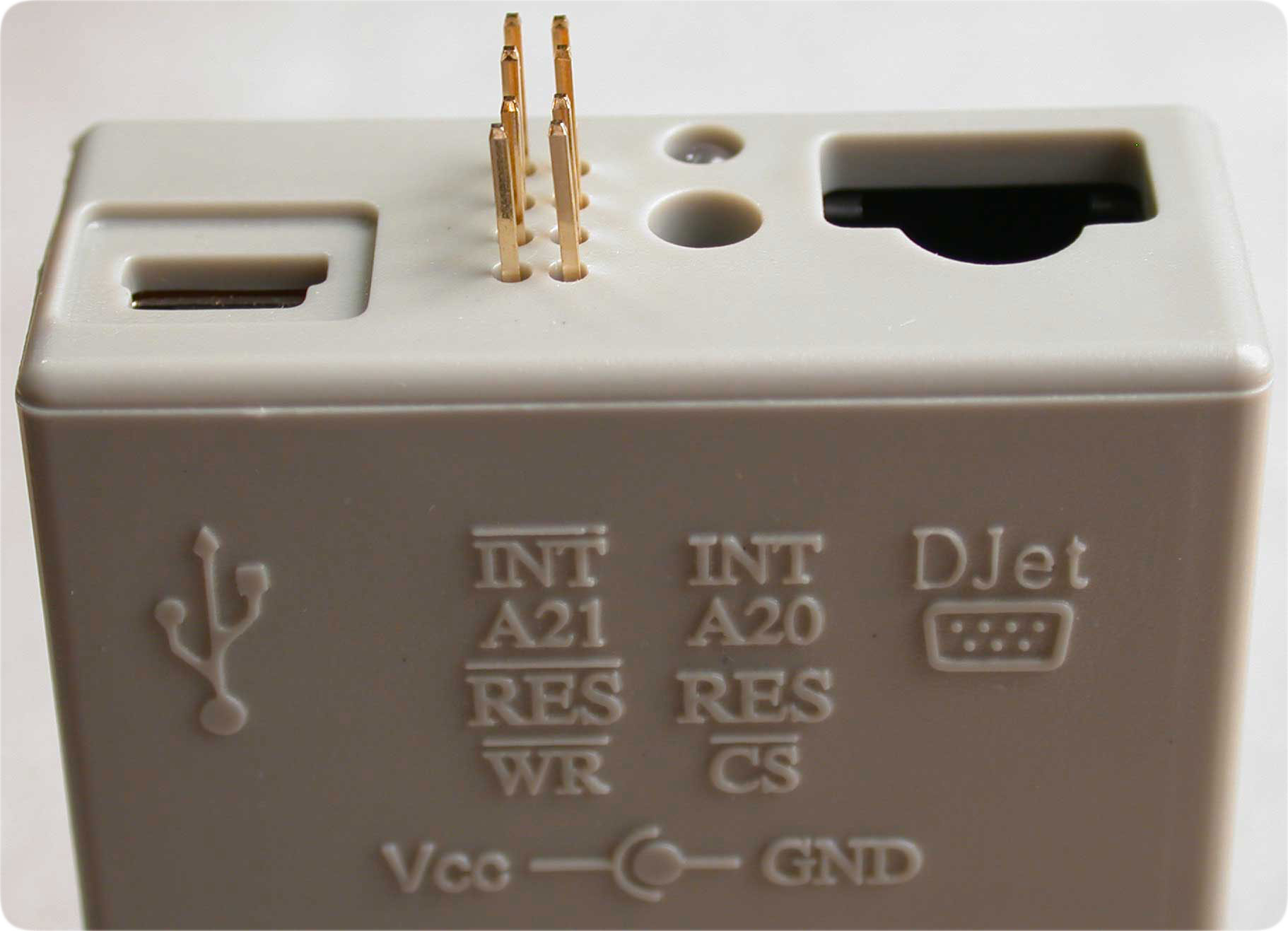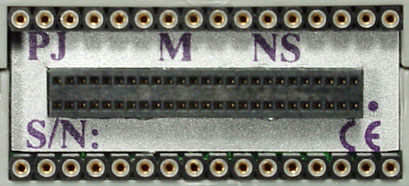Products : PROMJet : Flash Emulator Product Description
PROMJet Emulator
PROMJet is the world's best selling, most advanced Flash emulator. It is a development tool for embedded systems that eliminates the need for programming Flash memory during firmware development cycle. It replaces the Flash memory of the system under development allowing the user to load, examine, modify, view and patch the program code directly into PROMJet's emulation memory. PROMJet connects to a PC host system via a USB, parallel port or an optional Ethernet adapter. The ultra compact design (1.7" x 0.7" x 2.3") / (43 x 18 x 58mm), high speed target access time (down to 18ns), ultra fast data up/download speed (up to 4 Mb/Sec.) and jumper-less configuration by the software facilitate the user firmware development. The target system recognizes PROMJet as if it were a Flash chip plugged into the target socket. Since PROMJet functions independently of microprocessor type, it may be used to develop code in virtually any target system that uses a standard TSOP, PSOP, SOIC, DIP, PLCC or BGA Flash memory.
A write input signal allows the target processor to write PROMJet emulation memory to change variables or set breakpoints in the Flash area. Also provided is a second Chip-Select signal to emulate a second memory device. An external Reset and /Reset output signals enable the host PC to reset the target system on demand. PROMJet supports wider data buses (up to 128 bit) or target systems with multiple Flash chips by using multiple units controlled from a single software interface. Power is provided via an external power supply or a USB connection. A three-color LED indicates the state of the emulator and target system (Run/Stop/Access).
PROMJet provides a trigger circuit that allows the user to trigger on CPU memory accesses inside PROMJet address space. The user can specify the type of access to Read, Write or both. Also the trigger circuit can be programmed in single-shot mode or can be activated every time the CPU accesses the memory location. The INT and /INT connectors are used to either interrupt the target CPU or to trigger a scope or logic analyzer if the trigger circuit inside PROMJet is enabled.
There are multiple ways to connect PROMJet to a target system. Some versions of PROMJet provide a 32-pin DIP connector to interface directly with old-style 8-bit Flash Memory chips. The 50-pin high-density connector allows a single PROMJet device to support high capacity (up to 256MBit) as well as 16-bit Flash memory devices. EmuTec offers more than 50 different adapters to interface between this connector and varies Flash footprints such as TSOP, PSOP, SOIC, DIP, PLCC and BGA. A number of our partners and customers have designed this connector into their circuit board for a rigid emulation connection. Please contact EmuTec for this connector specification.
Unlike other 16-bit memory emulators that will only emulate 8-bit devices at half the emulator capacity by just ignoring the higher 8-bit memory bank, a 16-bit PROMJet can emulate both 16-bit and 8-bit devices at FULL capacity. So for example a 32MBit PROMJet can emulate a 4M x 8bit or a 2M x 16Bit device just by checking a switch box in the host software. There are no external adapters or cards needed to facilitate this feature. The unit will work in either mode at the rated access speed.
The Variable-Voltage option allows PROMJet to operate in any target with a supply voltage between 1.5 and 5Volt. This option is built inside PROMJet and does not require any external adapters. PROMJet measures the target voltage and limits all data and control signals to this voltage level.
PROMJet also provides a Trace module that allows the user to trace CPU accesses using an HP or Tektronix logic analyzer. The module can be plugged between PROMJet and the target board and will interface directly to the logic-analyzer cables. This saves the user the integration of such an interface on the target board or the use of expensive clip-on adapters to probe the CPU directly.
PROMJet is fully integrated in DebugJet JTAG debug interface. If a PROMJet is used when debugging a JTAG-enabled processor, such as an ARM or a PowerPC core, DebugJet can use PROMJet to emulate the Flash chip on the board. This is done for all Flash types such as SPI, LPC and parallel Flash devices.
The user has to simply identify the flash size and address location in DebugJet setup menu. DebugJet will use PROMJet download connection to write the Flash memory without the use of processor JTAG port. This can be helpful when the user is using a non-parallel Flash memory, such as SPI, that is addressed via an auxiliary chip.
Also in situation where PROMJet download speed is higher then JTAG download speeds, DebugJet can be setup to use PROMJet for application downloads instead of JTAG. The user can set specific memory regions within processor address space where this feature would be used.


